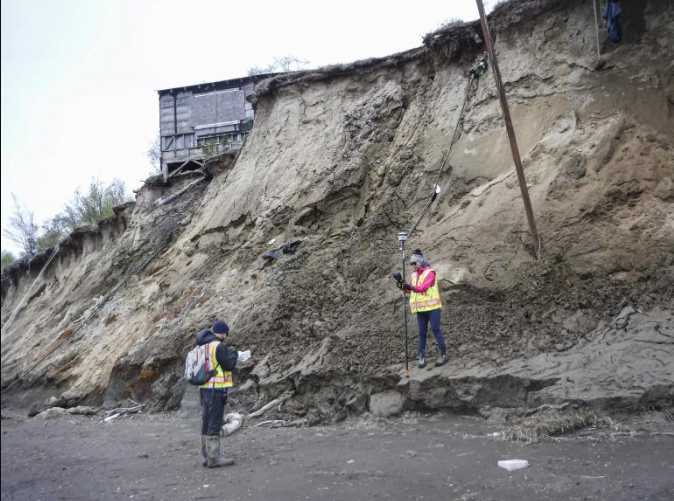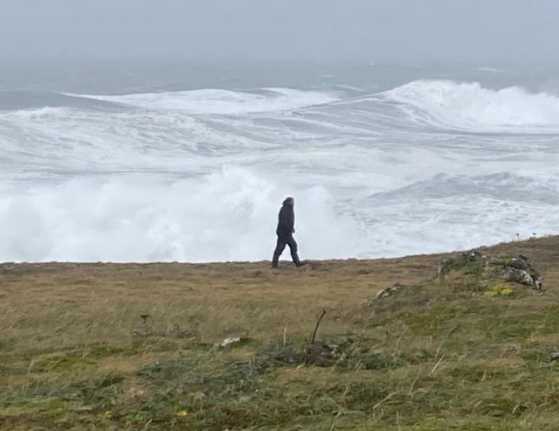
Alaska villages facing coastal disasters may be able to use new erosion-monitoring tools as part of their decision-making arsenal, thanks to a pilot study led by the University of Alaska Fairbanks.
Lead author Chris Maio, an assistant professor of coastal geography at the UAF College of Natural Science and Mathematics, reported the findings on Dec. 14 at the American Geophysical Union’s fall meeting.
The Stakes for Stakeholders study began three years ago, when it was becoming clear that many Alaska villages were not equipped to accurately document the destruction resulting from storms and other environmental events.
One such situation occurred in 2013. After several villages were so damaged by a series of severe storms that a federal presidential disaster declaration was issued, the village of Newtok and 15 others applied for disaster recovery funding.
None met the criteria to receive aid.
“The issue they ran into was that they couldn’t prove that a change actually occurred during the storm,” said UAF doctoral student Rich Buzard, a Digital Coast fellow with the National Oceanic and Atmospheric Administration. “They didn’t have any hard evidence.”
“This sparked the idea of getting that proof,” Buzard said. “By working with these communities, we’re scientifically verifying these measurements. We can show if it is a storm that caused the damage.”
[content id=”79272″]
The research team, which also included the Alaska Division of Geological and Geophysical Survey’s Coastal Hazard Program, worked with local coordinators in 10 Bristol Bay communities. People of all ages participated in interactive training sessions on simple, low-cost methods for measuring erosion and maintaining monitoring sites.
“The people in the communities are the most important part, and working with such highly motivated people blew me away,” said Buzard.
Maio also stressed the importance of boundary spanners, who are people working as mediators between local residents and scientists.
“As outsiders, we can’t make these projects happen,” he said. “You need that local champion that the people have known all their lives.”
Since the initial project, more than 20 Alaska villages have agreed to participate. Increased funding from organizations such as Alaska Sea Grant, UAF and the Bureau of Indian Affairs, as well as from the villages themselves, underscores that agencies and villages recognize the value of the study.
“I’ve been impressed with how successful it’s been,” Maio said. “Our pilot study is growing into this broader project, and we’re expanding into other communities.”
The study also resulted in an agreement between the Environmental Protection Agency and participating communities that will allow the EPA to recognize their erosion measurements.
“We have the capabilities, here at UAF, to provide this service to people living on the coastline,” Maio said. “It’s not really that complicated. It’s not rocket science, but it provides a real product that serves the state.”
Source: UAF







